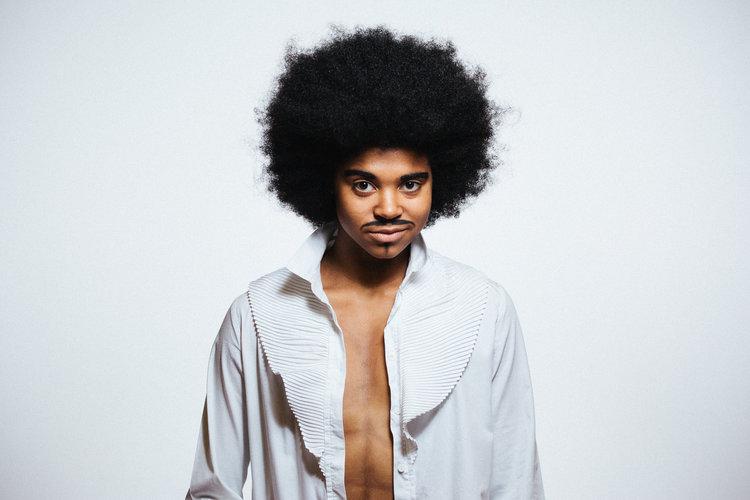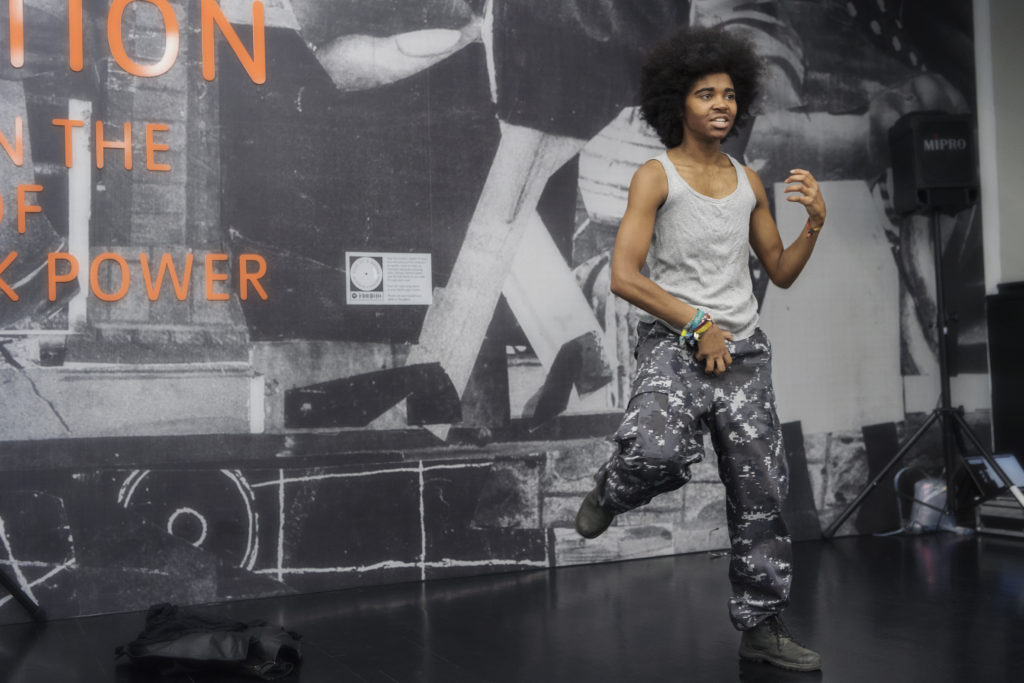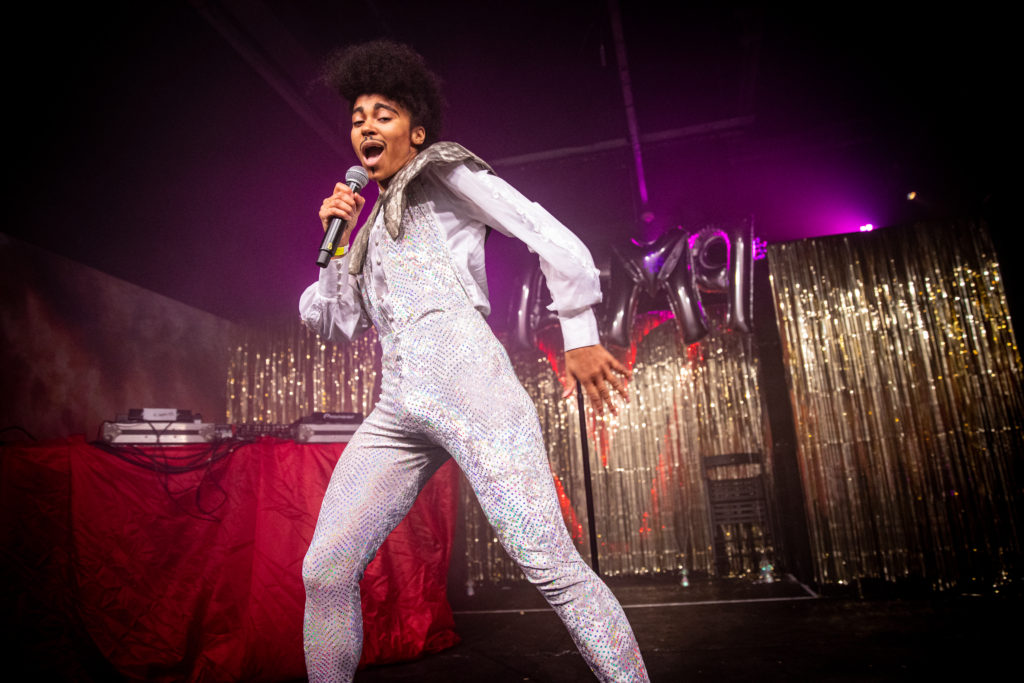
Image credit: Stephen Allwright
Blog written by Isabel Adomakoh Young
As a young woman in the final years of her Bachelor’s degree, I had a complex relationship with my face already. It’s well known by now that women are under an onslaught of marketing and socio-historical pressure to take issue with our natural appearance. Young women, only just getting to know themselves and how they interact with the world around them, are susceptible to this in specific ways.
Then there was the fact of my being one of a handful of brown faces across the entire university – “the beans in the rice”, as an African American man I once met put it. I was lucky enough, however, to have been raised with priorities beyond surface appearance, and with a sense that I was both Ghanaian (father’s side) and English (mother’s), rather than neither. I was also lucky that my appearance passed for ‘normal’ in all the insidious ways that make some people’s lives easier and some people’s incredibly hard.
I appeared confident enough to my peers, apparently, to be invited to perform in theatre shows, which I did with some trepidation and a lot of enjoyment, until one day I was asked, quite out of the blue as it seemed to me, if I wanted to come to a drag workshop. An actor I knew a bit had cooked up the idea with a director to get a group of women together and explore ‘drag kinging’. It was the first time I’d heard the phrase and it took me a moment to understand. Drag queens are historically men exploring femininity, so… kings must be women exploring masculinity! It makes perfect sense when you think of it, but I certainly never had.
As the years have gone by since, I learned that not many people have, even now. (The binary concept of swapping opposites has also been exploded by the fantastic variety of drag performance I’ve since encountered, across the gender spectrum. But that was all still to come.) And they’d chosen me, for reasons I was never clear on, as someone who ‘might be interested’. I was.

A group of us met in a big college space they’d booked, with carpeted floor and wraparound windows. The two directors did a little presentation; some quotes from gender theorists, images of music hall performers, 80s musicians, smoky cabaret shows, boy bands. Gradually, we moved from discussion to action, pulling on miscellaneous pieces of clothing people had brought, watching the lines of our bodies alter. We asked, what makes a man? What do we do that most men don’t? How would you signify masculinity without words? What might your body do in public space? Alone? What is male seduction like? What about men who don’t read as conventionally masculine? It was fascinating.
I suddenly became aware how hard I worked, almost unconsciously, to signify femininity to those around me. Decisions I’d made years ago, as a pre-teen, about “what a woman does”, how my face rests or moves, where and how my body should be. Weight on one leg, give way on the pavement, lively smile not slack neutrality. Attractiveness, passiveness, correctness. I’d grown out of ideas like putting your tongue in your back teeth when you smile, or perfecting the America’s Next Top Model “smize”, but there were stealthier, less conscious things still in there. Feminist activism had highlighted oppressive norms to me by then, but not down to my own physicality.
I realised then that I could let go of some of those behaviours; the ones that I’d chosen not from a place of authenticity but of fear and shame, the ones that didn’t express me.
Not many of the group knew each other, but we leaned in close, sharing eyebrow pencils and contour brushes in what would become a familiar routine, but was, that first time, revolutionary for us. With the scanty internet guidance we could find, and lots of discussion, we re-invented ourselves. Moustaches and beards, sure, but subtler things too. Of course each man is different, but how to signal masculinity to an audience? Might eyebrows be heavier, might an adam’s apple protrude more, a jawline be more square? The art of contouring; many of us were well-practised in traditionally feminine makeup, but now we were in uncharted waters, our old habits useless. It was exciting. I followed along with the group’s decisions, only later recognising that a broad rule for Caucasian men may not be right for a mixed-race king.

We laughed as students walked unwittingly past the huge windows, thrilled to be in these new unfamiliar guises. Looking into a hand-mirror, I saw someone known and unknown, like a long-lost brother. As a child, I’d been a tom-boy for years, wishing in some nebulous way to “be a boy”. What if that kid could see me now? I even found my face moved differently; my new character raised one eyebrow suggestively, hooded his eyes and held a sleepy half-smile. He pleased an imagined audience without trying. Where did this all come from?
As we explored the theory of drag more – discussing performative gender, preconceptions and limitations, norms and expectations – the fact that masculinity really is seen as the default was brought home to me. Part of what was so liberating about drag kinging was that we were breaking free of the age-old principle that a man is a blank slate, full of potential and possibility, but a woman is a set thing, constrained; a thing to get right or wrong.
When we’d formed our company Pecs Drag Kings, and told people about it, we often met blank looks, questions like “But what do you even do?” etc. It takes some thought to realise that masculinity is just as performative as femininity. Just because men mostly don’t paint their faces these days doesn’t mean the concept’s not hugely contrived. Our fun, high energy, surprising cabaret shows bring that truth into focus in technicolour.

While I’m proud of the brilliant work Pecs make, and the fascinating conversations it sparks – which I love eavesdropping on in the bar after the show – I am most grateful to drag for helping me to find my own gender expression. By pushing boundaries and exploring possibilities, I’ve found a more authentic version of my day-to-day self; in my appearance and in how I move through the world. I set the terms of my gender expression now, each and every day. I’m glad that through our workshops and shows we sow those seeds in others too.
Isabel is a queer theatre-maker, voiceover and writer of English and Ghanaian origins based in London. After studying English at Cambridge, she trained with NYT Rep, then joined the Royal Shakespeare Company for 2019. She co-created the binary-bending collective Pecs Drag Kings, inclusive arts event Brainchild Festival and the bestselling ‘Lionboy’ book trilogy, adapted and toured globally by Complicité.
http://www.isabeladomakohyoung.com/
Don’t forget to read our other blogs exploring the connections between faces, expression and identity:
Daring to be Different, by Amanda Bates
Owning by Face, by Marc Crank
